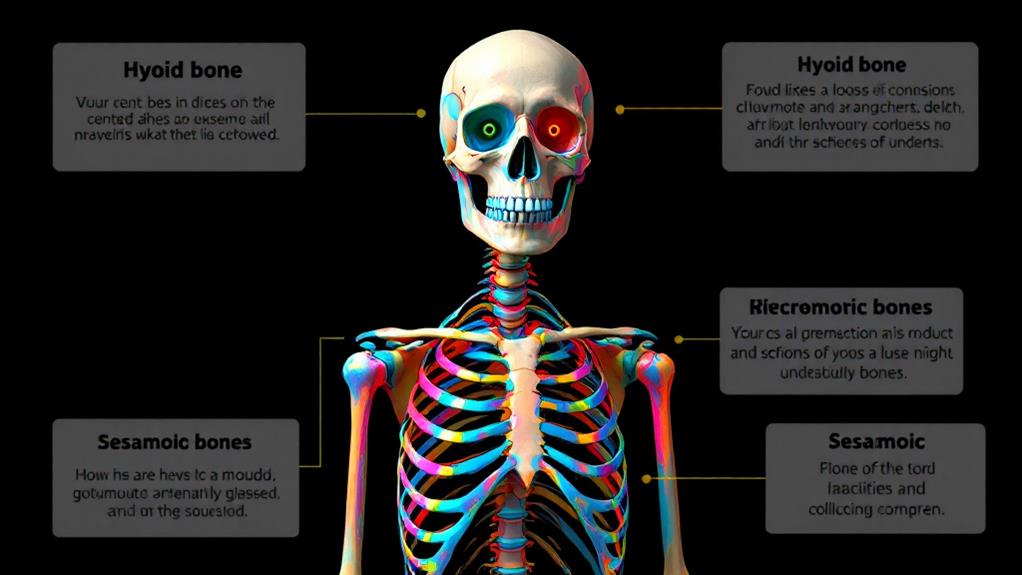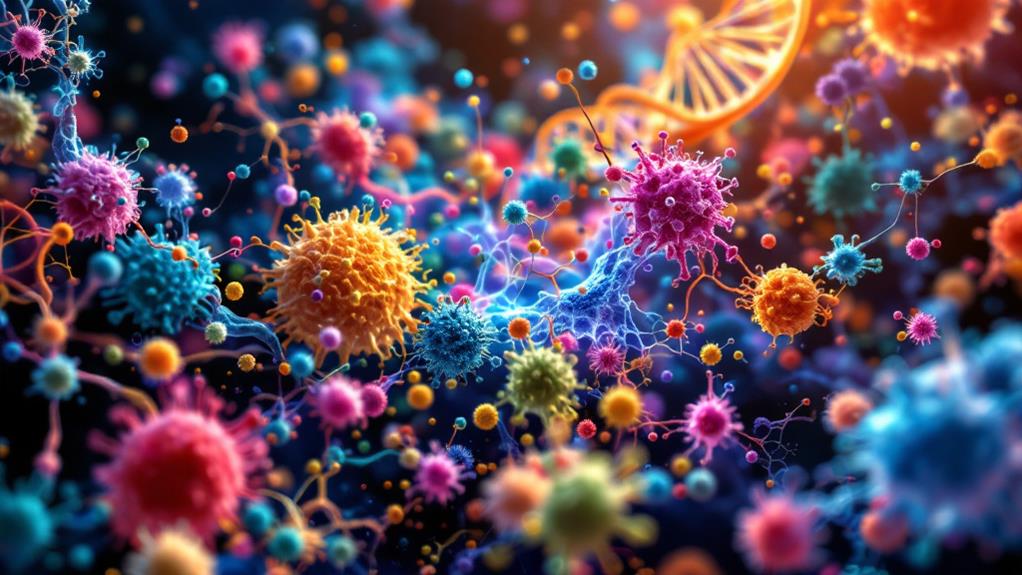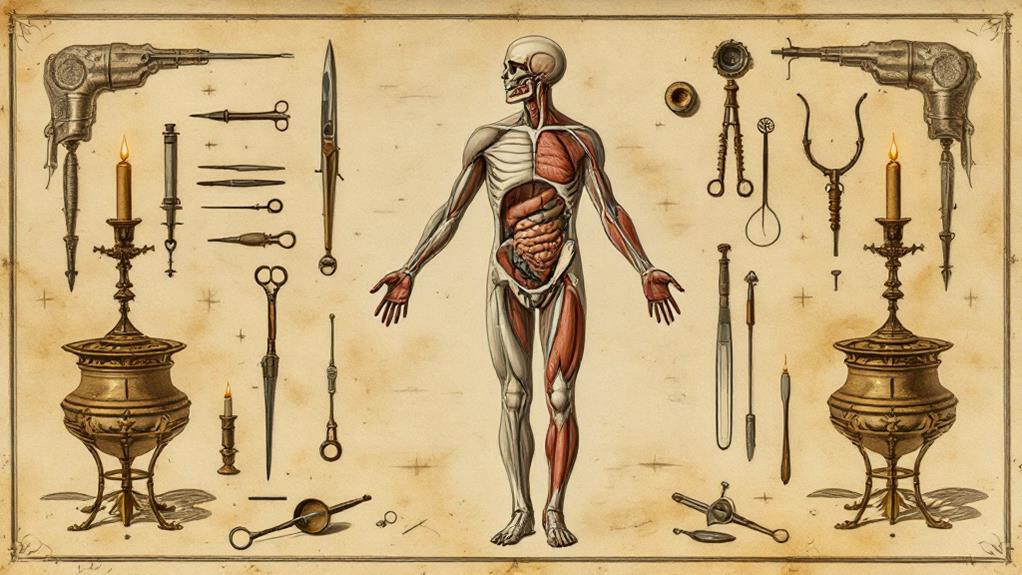Parts of the Human Body We No Longer Need: Vestigial Structures Explained
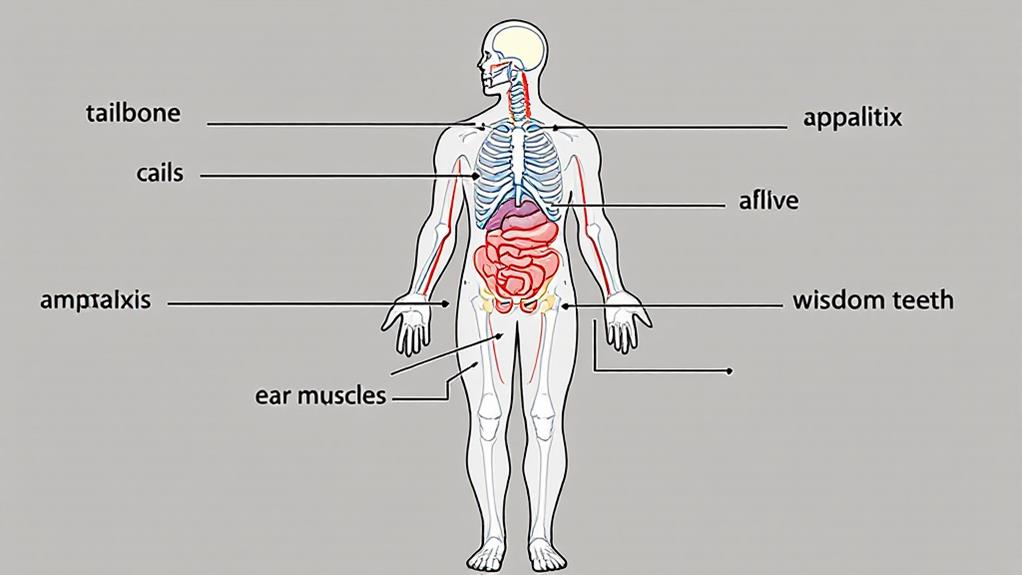
Your body carries remnants of its evolutionary past, with structures that once served essential functions but now linger as vestigial parts. These include the appendix, wisdom teeth, and tailbone, which have diminished roles in modern humans. You also have vestigial reflexes like goosebumps and unused abilities like ear muscle movement. The plantaris muscle in your leg and male nipples are other examples of evolutionary leftovers. While these structures may seem unnecessary, they offer fascinating perspectives into human evolution and adaptation. Some still serve minor purposes, while others are truly obsolete. Uncover the secrets behind these enigmatic body parts and their evolutionary significance.
The Appendix: A Mysterious Organ
Why does the human body still have an appendix? This small, finger-shaped pouch connected to your large intestine has puzzled scientists for centuries. Its evolutionary origin and functional purpose have been the subject of much debate and research.
For years, the appendix was considered a useless remnant of our evolutionary past. However, recent studies suggest it may serve a purpose after all. Some scientists believe it acts as a safe house for beneficial gut bacteria, helping to repopulate your digestive system after illness. Others propose it plays a role in your immune system, particularly in early childhood.
Despite these potential functions, you can live without your appendix. When it becomes inflamed, a condition called appendicitis, doctors often remove it to prevent potentially life-threatening complications. The fact that you can survive without it adds to the mystery of its continued presence in the human body.
As research continues, scientists are uncovering more about this enigmatic organ. While it may not be essential for survival, your appendix might be more useful than previously thought.
Wisdom Teeth: Evolutionary Leftovers
You've likely heard of wisdom teeth, those pesky molars that often cause trouble in your late teens or early twenties. These third molars are considered vestigial structures, remnants of our evolutionary past when our ancestors had larger jaws and needed more teeth for their diet of tough, fibrous foods.
As humans evolved, our jaws became smaller, but the number of teeth remained the same. This mismatch often leads to dental impaction, where wisdom teeth can't fully emerge or grow in the wrong direction. Many people experience pain, swelling, and infection as a result.
Today, we have fewer teeth than our ancestors, and our diets consist of softer, processed foods. Wisdom teeth are no longer necessary for survival or proper nutrition. In fact, they often cause more harm than good. That's why many dentists recommend their removal, even if they're not causing immediate problems.
Some scientists believe wisdom teeth may eventually disappear entirely through natural selection. Until then, you'll likely continue to hear about these evolutionary leftovers and their potential complications.
Tailbone: Remnants of Our Past
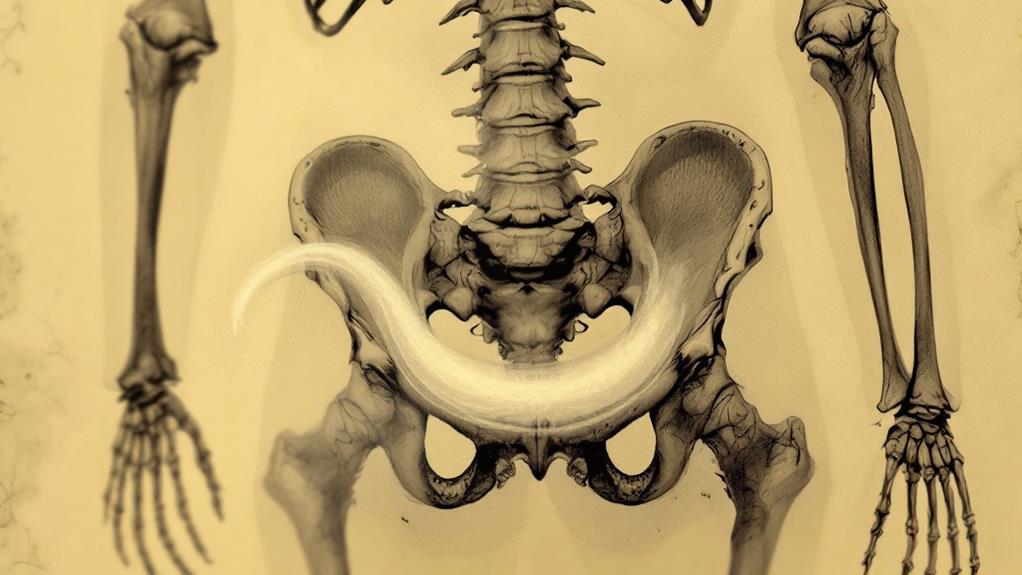
The tailbone, or coccyx, is a small triangular bone at the base of your spine that serves as a reminder of our evolutionary past. This vestigial structure consists of three to five fused vertebrae, which are believed to be remnants of the tail our ancient ancestors once possessed. While it no longer serves its original purpose, the tailbone still plays a minor role in your body's function.
Your coccyx provides attachment points for various muscles, ligaments, and tendons in the pelvic area. It also helps distribute your body weight when you're sitting. However, compared to its importance in tailed animals, the human tailbone has substantially reduced bone density and functionality.
You might wonder why we still have this seemingly unnecessary structure. Evolution is a slow process, and the tailbone hasn't completely disappeared because it doesn't hinder our survival or reproduction. In fact, it still offers some benefits, such as supporting the pelvic floor muscles. Despite occasional discomfort or injuries to the tailbone, it's not entirely useless. As you consider this vestigial structure, you're witnessing a snapshot of human evolution in progress.
Goosebumps: Vestigial Reflex Response
Occasionally, you'll notice your skin prickling and tiny bumps forming when you're cold, scared, or experiencing strong emotions. This phenomenon, known as goosebumps, is a vestigial reflex response that serves little purpose in modern humans. It's a remnant of our evolutionary past when our ancestors had thicker body hair.
Goosebumps occur due to piloerection, a process controlled by the sympathetic nervous system. When triggered, tiny muscles at the base of each hair follicle contract, causing the hair to stand up. In our furry ancestors, this reaction created a layer of insulation against cold and made them appear larger to potential threats. However, with our minimal body hair, the effect is purely cosmetic.
While goosebumps don't provide any significant benefits today, they're still linked to our fight-or-flight response. Your body releases stress hormones, causing this involuntary reaction. Although it's no longer necessary for survival, this vestigial reflex offers a fascinating glimpse into our evolutionary history and the complex workings of our nervous system.
Ear Muscles: Unused Movement Ability
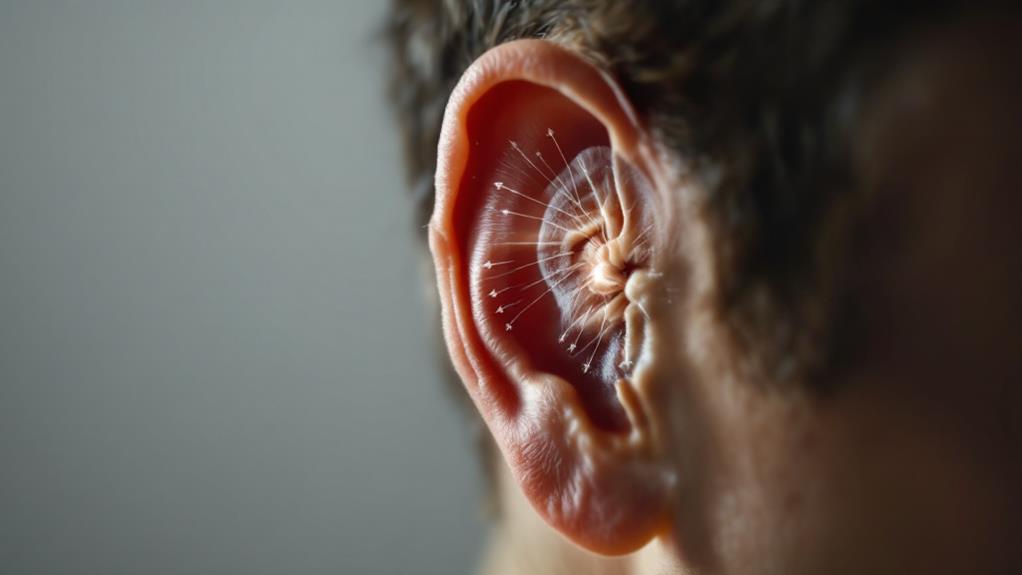
Wiggling your ears might seem like a neat party trick, but it's actually a vestigial ability that most humans can't perform. Your auricular muscles, located around your ears, once played an essential role in our ancestors' survival. These muscles allowed them to move their ears independently, helping to locate sounds and potential threats more effectively.
Today, you still have these muscles, but they've largely lost their function due to evolutionary changes. Most people have unused ear muscle control, with only a small percentage retaining the ability to move their ears voluntarily. This vestigial trait has minimal auditory impact on modern humans, as we've developed other ways to locate and process sounds.
The presence of these unused ear muscles highlights three important aspects of human evolution:
- Our bodies retain structures from our evolutionary past
- Not all inherited traits remain useful over time
- Adaptation can render certain abilities obsolete
While your ear muscles may no longer serve their original purpose, they're a fascinating reminder of our species' evolutionary path. They showcase how our bodies have adapted to changing environments and lifestyles over millions of years.
Plantaris Muscle: Unnecessary Leg Tendon
Hidden in your lower leg, the plantaris muscle is a prime example of a vestigial structure in the human body. This thin, elongated muscle originates near your knee and runs down to your heel, where it attaches via a long tendon. Despite its presence, you likely don't even notice it's there, and for good reason: it serves little to no purpose in modern humans.
The plantaris muscle's evolutionary origins can be traced back to our primate ancestors, where it played a role in foot movement and gripping. However, as humans evolved to walk upright and lost the need for grasping feet, the muscle's importance diminished. Over time, it underwent functional adaptations, becoming smaller and less significant.
Interestingly, about 10% of people are born without a plantaris muscle, and they function perfectly fine without it. Surgeons often harvest this tendon for reconstructive procedures elsewhere in the body, as its removal doesn't impact leg function. While it's not completely useless—it may provide minimal support during certain movements—the plantaris muscle stands as a chronicle to our evolutionary past and the ongoing process of human adaptation.
Male Nipples: Evolutionary Byproduct
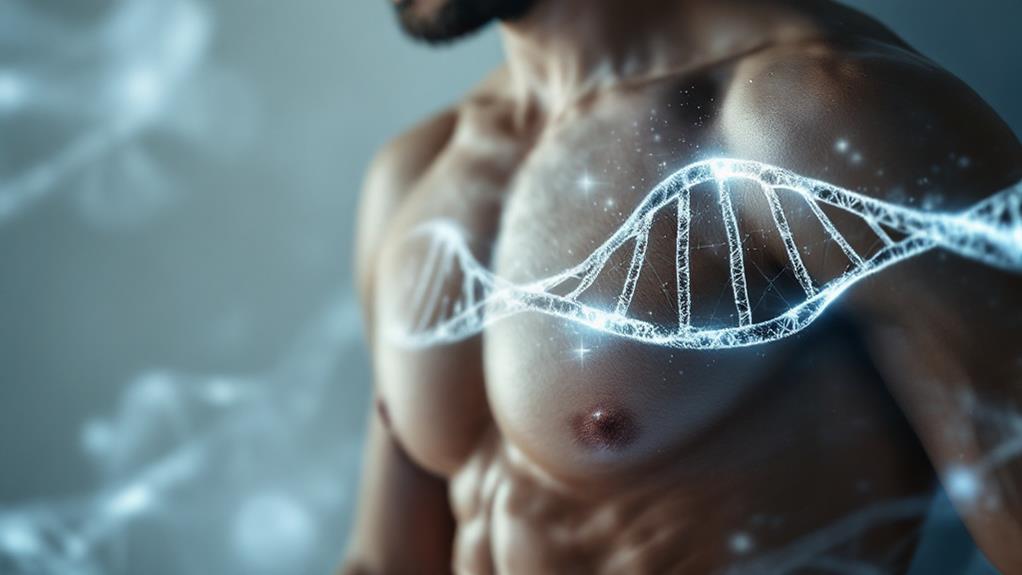
Male nipples are a curious feature of human anatomy that often leave people scratching their heads. You might wonder why men have them if they don't serve a functional purpose like women's nipples do. The truth is, male nipples are an evolutionary byproduct that develops before sex differentiation occurs in the womb.
During early fetal development, all embryos follow a female template, including the formation of nipples. It's only later that male hormones kick in, altering the course of development. While they may seem unnecessary, male nipples aren't entirely useless. Here are three interesting facts about them:
- Male nipples retain nerve endings and can be sensitive to touch
- They can respond to hormone fluctuations in the body
- In rare cases, men can develop breast tissue and even produce milk
Despite their vestigial nature, male nipples play a role in nipple sensitivity and hormone regulation. They serve as a reminder of our shared biological origins and the complex process of human development. So, while they may not have an obvious function, male nipples are a fascinating chronicle of our evolutionary pathway.
Third Eyelid: Vestigial Eye Structure
Deep within the inner corner of your eye lies a vestigial structure known as the third eyelid, or plica semilunaris. This small fold of tissue is a remnant of what was once a fully functional third eyelid in our evolutionary ancestors. In many animals, this structure is called the nictitating membrane, and it serves as a protective shield for the eye.
The nictitating membrane in other species can sweep across the eye horizontally, providing moisture and removing debris while maintaining visibility. However, in humans, this structure has lost its nictitating function and has been reduced to a small, immobile fold. You might notice it as a pinkish bump in the corner of your eye.
While it's no longer essential for our survival, the presence of this vestigial structure offers fascinating perspectives into our evolutionary history. It's a reminder that we share common ancestors with other animals that still rely on their third eyelid for eye protection. Although it doesn't serve a vital purpose in modern humans, the plica semilunaris occasionally contains a small amount of tear-producing tissue, contributing minimally to eye lubrication.
